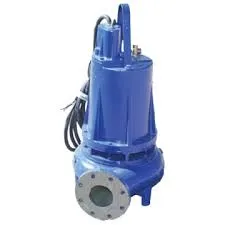Kyrgyz
- Afrikaans
- Albanian
- Amharic
- Arabic
- Armenian
- Azerbaijani
- Basque
- Belarusian
- Bengali
- Bosnian
- Bulgarian
- Catalan
- Cebuano
- Corsican
- Croatian
- Czech
- Danish
- Dutch
- English
- Esperanto
- Estonian
- Finnish
- French
- Frisian
- Galician
- Georgian
- German
- Greek
- Gujarati
- Haitian Creole
- hausa
- hawaiian
- Hebrew
- Hindi
- Miao
- Hungarian
- Icelandic
- igbo
- Indonesian
- irish
- Italian
- Japanese
- Javanese
- Kannada
- kazakh
- Khmer
- Rwandese
- Korean
- Kurdish
- Kyrgyz
- Lao
- Latin
- Latvian
- Lithuanian
- Luxembourgish
- Macedonian
- Malgashi
- Malay
- Malayalam
- Maltese
- Maori
- Marathi
- Mongolian
- Myanmar
- Nepali
- Norwegian
- Norwegian
- Occitan
- Pashto
- Persian
- Polish
- Portuguese
- Punjabi
- Romanian
- Russian
- Samoan
- Scottish Gaelic
- Serbian
- Sesotho
- Shona
- Sindhi
- Sinhala
- Slovak
- Slovenian
- Somali
- Spanish
- Sundanese
- Swahili
- Swedish
- Tagalog
- Tajik
- Tamil
- Tatar
- Telugu
- Thai
- Turkish
- Turkmen
- Ukrainian
- Urdu
- Uighur
- Uzbek
- Vietnamese
- Welsh
- Bantu
- Yiddish
- Yoruba
- Zulu
Telephone: +86 13120555503
Email: frank@cypump.com
Sep . 15, 2024 13:16 Back to list
water pipeline booster pump
Understanding Water Pipeline Booster Pumps Essential Components for Efficient Water Distribution
In many urban and rural areas, maintaining a consistent and reliable water supply is a critical component of infrastructure. Water pipeline systems are designed to transport water from sources to consumers, but geographical challenges and increased demand can sometimes lead to inadequate pressure levels. This is where water pipeline booster pumps come into play, providing the necessary pressure to ensure water reaches its intended destination efficiently.
Booster pumps are essentially mechanical devices that increase the pressure of water flowing through pipelines. They are commonly deployed in various settings, including municipal water systems, agricultural irrigation, and in large facilities such as commercial buildings and industrial plants. The primary function of these pumps is to overcome pressure losses caused by friction, elevation changes, and the sheer distance water must travel from its source to the end user.
There are various types of booster pumps, including centrifugal pumps, positive displacement pumps, and submersible pumps. Centrifugal pumps are the most frequently used type for pipeline applications due to their efficiency and ability to handle large volumes of water. These pumps work by converting rotational energy, typically from an electric motor, into hydrodynamic energy, thereby increasing the water's velocity and, consequently, its pressure.
water pipeline booster pump

One of the key benefits of booster pumps is their ability to ensure that water remains in constant motion, preventing stagnation. This is particularly important in long-distance pipeline systems where water may remain stationary for prolonged periods. Stagnant water can lead to contamination and the growth of harmful bacteria, thus impairing water quality and safety.
In addition to enhancing water pressure, booster pumps can also be integrated with smart technology. These advanced systems can monitor real-time pressure levels and adjust pump operation accordingly. For instance, if demand increases due to peak usage times, the system can automatically ramp up the pump's performance to deliver the required pressure. This intelligent approach not only maximizes efficiency but also conserves energy, reducing the overall operational costs for water distribution.
The installation of a booster pump system is often in response to specific challenges, such as increased population density or aging infrastructure. Communities facing water pressure issues can significantly improve their supply system's reliability and efficiency by investing in booster pump technology. Moreover, emerging trends toward sustainable water management further highlight the importance of these pumps in conserving resources and ensuring that all households have access to clean and pressurized water.
In conclusion, water pipeline booster pumps are vital for maintaining effective water distribution systems. They play a crucial role in overcoming pressure challenges and ensuring that water flows efficiently, regardless of the distance or elevation. As technology continues to advance, booster pumps will likely become even more efficient, supporting the ongoing need for sustainable and reliable water supply in communities around the world. The integration of smart systems into these pumps will further enhance their functionality, paving the way for improved water distribution solutions for future generations.
-
High-Performance Air Pumps for Sand & Gravel | Efficient Transport
NewsAug.03,2025
-
ISG Series Vertical Pipeline Pump - Chi Yuan Pumps Co., LTD.|Energy Efficiency, Corrosion Resistance
NewsAug.03,2025
-
ISG Series Pipeline Pump - Chi Yuan Pumps | Energy Efficiency&Compact Design
NewsAug.03,2025
-
ISG Series Vertical Pipeline Pump - Chi Yuan Pumps Co., LTD.|High Efficiency, Low Noise, Durable
NewsAug.02,2025
-
ISG Series Vertical Pipeline Pump - Chi Yuan Pumps | High Efficiency, Low Noise
NewsAug.02,2025
-
ISG Series Vertical Pipeline Pump- Chi Yuan Pumps Co., LTD.|High Efficiency&Compact Design
NewsAug.02,2025










